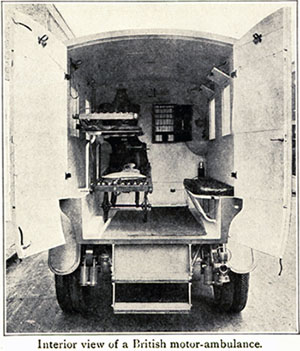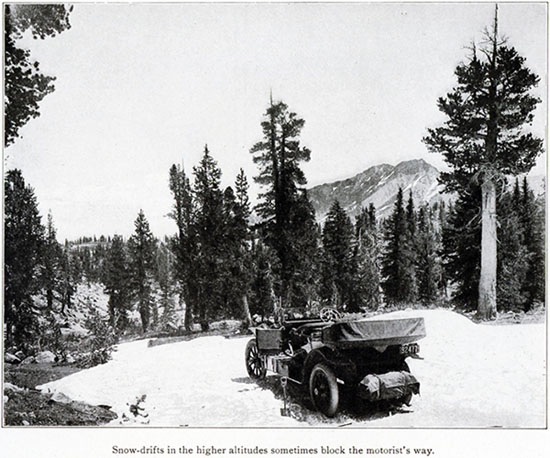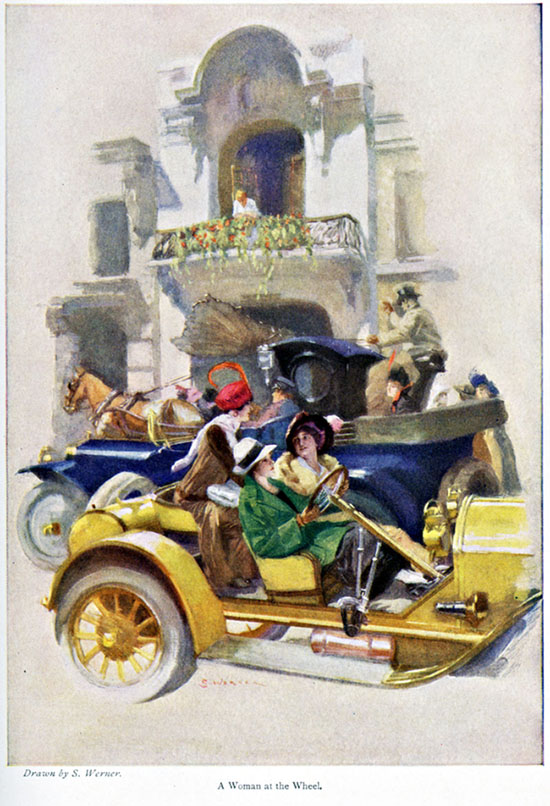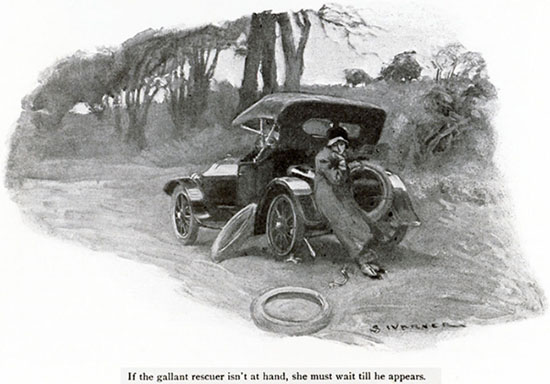The Automobile in 1915
Today, the automobile in transition. The University of Houston's College of Engineering presents this series about the machines that make our civilization run, and the people whose ingenuity created them.
February 1915: WW-I had begun 6 months ago in Europe. Two years later, we'd join the slaughter, but now we look across the ocean at other people's troubles. Life is good here in America. Automobiles flow off the new assembly lines and America has the means to buy them. Three back-to-back articles in Scribner's magazine clearly show what's happening.
First, The Motor in Warfare. This article presents an amazing parade of wholly new machines! Motorcycles, troop-carrying buses, armored cars, traveling telegraph stations, cannon-hauling equipment, and embryonic combat aeroplanes. The mood is very Gee-Whiz!

 Barely mentioned is the new motor-driven ambulance -- now hauling away the maimed victims of all this snazzy equipment.
Barely mentioned is the new motor-driven ambulance -- now hauling away the maimed victims of all this snazzy equipment.
The second article, Motoring in the High Sierras, follows a lone touring car on a bold journey from Reno to Sacramento -- the same trip my great grandfather had to make on foot, only 68 years earlier. Though it's still a daunting trip, we now find a few amenities -- a shaky wooden bridge over a roaring creek or a tunnel cut through the center of a Redwood tree. And this lovely world seems quite devoid of any other traffic.
The third article is The Woman at the Wheel. Here the writer looks at change from deep within the old world of class and privilege. Wealth is assumed. The automobile, a man's plaything, is now being taken up by the weaker sex. He writes:
The tire problem ... remains in an unsatisfactory state ... With practice a woman can manage a small tire ... but if even a medium-sized tire goes flat a woman must have masculine help ..."
One figure caption says, "Suburban life is enhanced by the use of small cars which easily connect the home and country club." And we struggle to grasp a world where cars still serve recreation alone. That'd change of course; but 20 years later, my father still left our car in the garage when he went to work. The only sensible way to go downtown in 1935 was on the electric trolley.
The writer mentions that a few fancier cars have automatic starters and no longer have to be cranked. He wonders when gear shifting will be made easier and engine settings simplified. Electric cars solve many of these problems but without an infrastructure of charging stations you can't tour in one. Electric cars would soon all but vanish as we provided automatic starters, synchromesh gears, and a gas and service station system.
But something else would also happen: We would enact Women's suffrage. And I have a feeling this writer, despite his antediluvian tone of voice, realizes that a much larger social upheaval was afoot back in 1915. For he finishes with a rather remarkable, even prophetic, observation. The present use of cars by women, he acknowledges, is an, "augury of the time when the automobile's liberating mission will be fulfilled."
I'm John Lienhard, at the University of Houston, where we're interested in the way inventive minds work.
The three articles are C. L. Freeston, The Motor in Warfare: Power and Speed in the Great European Conflict; C. J. Beldon, Motoring in the High Sierras; and H. L. Towle, The Woman at the Wheel. All are in Scribner's Monthly, An Illustrated Magazine for the People, Vol. LVII, February, 1915, pp. 185-223. (All illustrations from this source.)
 <
<

